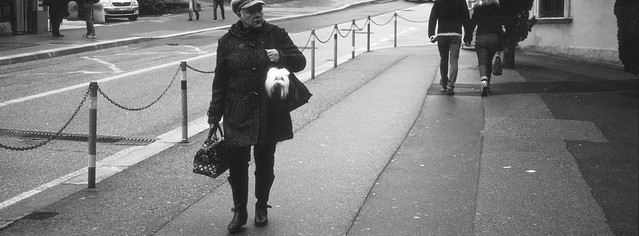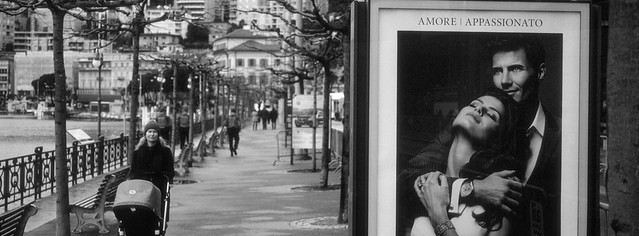The recent boat-rocking move by Apple to announce the decline and fall of Aperture has led me through several stages of anger, denial and acceptance. And it has also led me to re-evaluate my digital imaging workflow. For a while I’ve had the feeling that, technically, my photos lack a certain something, compared to other work I see published. Perhaps I’ve been rather complacent in imagining that my knowledge and skills in post-production are adequate. So this as well gave me some impetus to explore options a bit. To cut a long story short, my decision has been to adopt a solution coupling Iridient Developer with Aperture. More on this a bit later, but first a few words on the solutions I rejected.

Photoshop: I’m not anti-Adobe, and their raw decoding is generally good. However, it has some (minor) issues with Olympus files, and it can’t handle Sigma Merrill RAW. Also, I find the Camera Raw interface ugly and clumsy, and since I do this stuff for fun, well that’s a factor. I do use Photoshop very frequently, but more for my film workflow. And I’m not happy about the subscription model, even though since InDesign is an important tool for me, I’ll probably have to give in one day. For now I have Creative Suite 6, and that’s just fine.
Lightroom: Not really a contender for me. Been there, done that. It is good at many things, but pretty much everything it does something else does better. For example cataloging, which both Aperture and MediaPro do better.
CaptureOne: I own C1Pro, so it was a strong contender. But I don’t really care for the default curves it applies, and generally the GUI can be frustrating. The DAM features in v7 are very substandard, and at the same time what little interactivity there was with MediaPro in v6 has been killed off. But basically the character of the output doesn’t fit in with my objectives. I feel that C1 is optimized for the fashion industry, even if some leading landscape photographers such as Joe Cornish and Steve Gosling use it. But then they own PhaseOne backs.
DxO Optics Pro: I took a serious look at DxO following an article by Kirk Tuck. A strong point is the “DxO Lens Softness” which provides initial high quality input sharpening with no artefacts. Definitely better than Aperture. But the headline feature, lens correction, leaves me a bit dubious. For micro four thirds camera/lens combinations, rather than apply the manufacturer corrections included in the image file, DxO clearly applies its own, and the results are different. The original framing is not respected (interestingly there is significant image data outside of the frame) and to my eyes some minor distortion remains. For four thirds combinations it seems to make some weird changes too. I’m not convinced. And it doesn’t handle Sigma files. But the output is good and highly detailed. Indeed, I was on the verge of buying it when from one moment to the next the special offer pricing was removed. €269 is way too much.

So, back to Iridient Developer (ID). I’ve written about this great application before, but since Aperture has been around, it’s always been a secondary tool for me. But with the release of v2, and a host of new features, including tighter integration with Aperture, and the fact that it handles Sigma files very well indeed, it’s been getting more use. And now, finally, I’ve put a little effort into setting up a streamlined workflow.
Following my discovery of DxO’s lens de-blurring, I decided to see if I could get a similar result from ID’s generous range of sharpening tools. And indeed I could. The R-L Deconvolution method, which is specifically designed to remove minor blur rather than traditionally sharpen, works extremely well. As do ID’s highly configurable Noise Reduction tools. So these two controls together give a good approximation of Aperture’s RAW Fine Tuning brick, only with noticeably better results. These then form the basis for a camera default preset. ID allows you to define default settings for each camera type you use and for each ISO level. I haven’t gone to quite that extent yet, but maybe one rainy Sunday I’ll give it a go.
Aperture, of course, does not support alternative RAW engines. There are manual workarounds to this, but they’re tedious. However ID has recently acquired a new feature which makes this much easier. Now, if I configure ID as my external editor in Aperture, and use this to open a version, Aperture as usual sends a rendered TIFF to ID. ID, however, does not open the TIFF, but looks for the associated RAW file and opens that. Then, when you’ve finished, ID overwrites Aperture’s TIFF with it’s output. Even better, if you then re-open the original in ID, the settings from the first edit are retained. Therefore you have a hybrid non-destructive / baked-in edit workflow, which is close to ideal. Obviously you end up with an extra TIFF for each image you process in this way, but disk space really isn’t an issue any more. And I don’t do this for every image I import, only for those I select to potentially publish or print. Aperture alone is more than adequate for general work.

Sending an image to Iridient Developer from Aperture

Saving an edited image back to Aperture

The original version and the ID-rendered TIFF stacked in Aperture. Note I add a custom metadata field to remind me that I processed this with Iridient. It would be nice to automate that.
For further editing beyond the initial RAW development you then have the choice between ID and Aperture’s RGB edit tools. Both have strong offerings: to pick one from each, Aperture’s generally ignored extended range curve tool, which together with its 32-bit architecture lets you modify the curve for values over 100% white, is very good for highlight recovery and rolling off harsh highlights. I don’t know of any other tool which can do this. Similarly, ID has a unique - in my experience - curve tool which operates on the Lab Chroma (ab) channel, allowing precise control over saturation.

Aperture’s curve tool in extended mode
Aperture’s DAM tools are, in my opinion, second to none, and plenty of commenters agree with me. So having moved on from my initial furious reaction, I’ve come to cautiously give Apple the benefit of the doubt, and hope that the forthcoming migration to “Photos” might well be less traumatic than it initially appeared. Indeed it could, possibly, be as much of a paradigm buster as Aperture 1.0 was. We shall see. If I have to migrate my catalogue to a lesser tool, I’d rather do when all bridges are burned, not before. There’s no real downside in waiting. And in the meantime with this Aperture-Iridient workflow, I’m seeing appreciably better printed results.
Pity it’s only me who looks at them!













